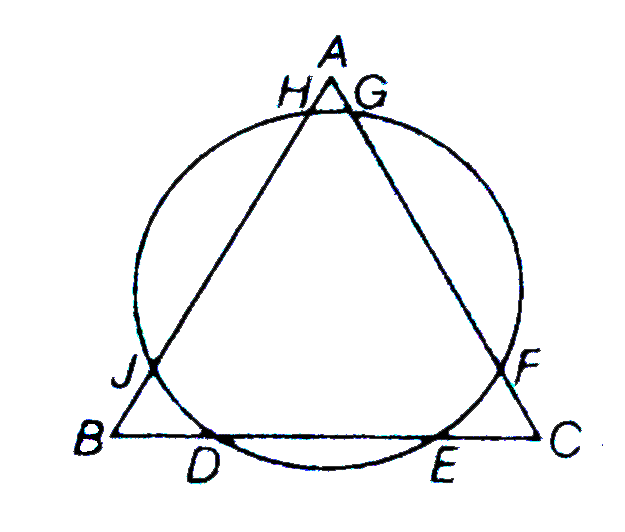Find dydx , if x = 6(t-sint) , y= 4(1-cost)Solution in Punjabi
The correct Answer is:B
Step by step video & image solution for Find dy/dx , if x = 6(t-sint) , y= 4(1-cost) by Maths experts to help you in doubts & scoring excellent marks in Class 12 exams.
Updated on:21/07/2023Topper's Solved these Questions
- PROPERTIES AND SOLUTION OF TRIANGLES BOOK - ARIHANT MATHSCHAPTER - PROPERTIES AND SOLUTION OF TRIANGLES EXERCISE - Exercise (More Than One Correct Option Type Questions)
24 Videos
- PROPERTIES AND SOLUTION OF TRIANGLES BOOK - ARIHANT MATHSCHAPTER - PROPERTIES AND SOLUTION OF TRIANGLES EXERCISE - Exercise (Statement I And Ii Type Questions)
15 Videos
- PROPERTIES AND SOLUTION OF TRIANGLES BOOK - ARIHANT MATHSCHAPTER - PROPERTIES AND SOLUTION OF TRIANGLES EXERCISE - PROPERTIES AND SOLUTIONS OF TRIANGLES EXERSISE 1: SINGLE OPTION CORRECT TYPE QUESTIONS
1 Videos
- PRODUCT OF VECTORSBOOK - ARIHANT MATHSCHAPTER - PRODUCT OF VECTORSEXERCISE - Exercise (Questions Asked In Previous 13 Years Exam)
52 Videos
- SEQUENCES AND SERIESBOOK - ARIHANT MATHSCHAPTER - SEQUENCES AND SERIESEXERCISE - Exercise (Questions Asked In Previous 13 Years Exam)
38 Videos
Similar Questions
If area of ΔABC(Δ) and angle C are given and if c opposite to given angle is minimum, then
View SolutionIn a triangle ABC,a3+b3+c3=c2(a+b+c) (All symbol used have usual meaning in a triangle.) Statement-1: The value of ∠C=60∘. Statement-2: ΔABC must be equilateral.
View SolutionIn the adjoining figure, the circle meets the sides of an equilateral triangle at six points.

If AG=2,GF=13,FC=1andHJ=7, then DE equals to
View SolutionLet O be the origin and let PQR be an arbitrary triangle. The point S is such that ¯¯¯¯¯¯OP⋅¯¯¯¯¯¯OQ+¯¯¯¯¯¯OR⋅¯¯¯¯¯¯OS=¯¯¯¯¯¯OR⋅¯¯¯¯¯¯OP+¯¯¯¯¯¯OQ⋅¯¯¯¯¯¯OS=¯¯¯¯¯¯OQ⋅¯¯¯¯¯¯OR+¯¯¯¯¯¯OP⋅¯¯¯¯¯¯OS Then the triangle PQR has S as its
View SolutionLet a,b,c be in A.P. and |a|<1,|b|<1|c|<1.ifx=1+a+a2+....to ∞,y=1+b+b2+....to ∞and,z=1+c+c2+...to ∞, then x,y,z are in
View SolutionFind dydx, when x=a(t+sint)andy=a(1−cost).
View Solutiondydx ज्ञात कीजिए -
x=a(t−sint),y=a(1−cost)
View Solutiondydx ज्ञात कीजिए -
x=a(logt+cost),y=a(et+sint)
View Solutiondydx ज्ञात कीजिए -
x=et(sint+cost),y=et(sint−cost)
View Solutiondydx ज्ञात कीजिए -
x=a(cost+tsint),y=a(sint−tcost)
View Solutiondydx का मान ज्ञात कीजिए यदि
x=a(t+sint),y=−a(1−cost)
View SolutionIf y=et+cost,x=logt+sint then find dydx.
View Solutionx = a (cost + t sint) , y = a (sint - tcost) find dydx .
View SolutionIf x=a(t+sint),y=a(1−cost), then dydx=
View Solutiondydx का मान ज्ञात कीजिए यदि x=a(t+sint),y=a(1−cost).
View Solutionयदि x=aet(sint−cost) तथा y=aet(sint+cost) तो dydx ज्ञात कीजिए।
View Solution
